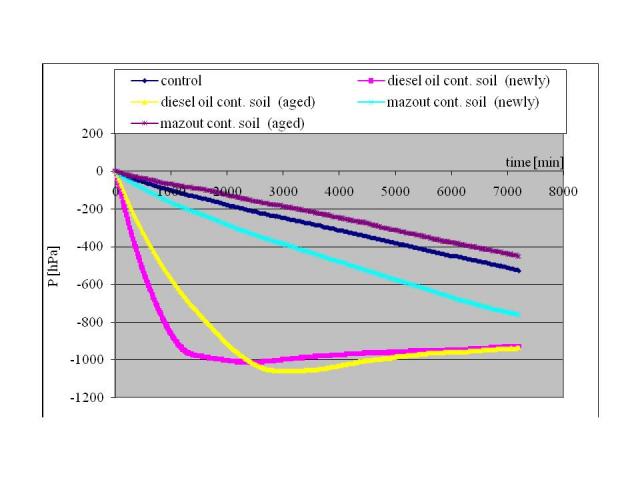he OxiTop measuring head measures and stores the pressure data during five days at every 20 minutes. Since temperature is constant, the pressure changes are caused by the soil respiration solely. Soil microbes consume oxygen and produce CO2, which is sequestrated by NaOH, resulting pressure drop in the vessel proportional to the quantity of sequestrated CO2. The results can be interpreted as follows:
1. The pressure drop in every vessel shows that the soil samples are active, and the biodegradation of organic contaminants has started.
2. On the two steep curves we can observe that diesel oil can be degraded faster and easier by the microbes than the mazout components of high molecular weight.
3. Biodegradation starts faster in freshly contaminated soils than in the case of older contaminations, since in case of fresh contamination the proportion of easily accessible components is higher, while in the older contamination it is rich in hardly biodegradable components
4. The fact that biodegradation is intense in old diesel contaminated soil indicated also the presence of active microflora adapted to the contamination.
5. In the case of old mazout contamination the activity is even lower than in the control soil. This implies that the hydrocarbons are hardly or not at all available in the soil therefore re-activation of the microflora is required.
6. Pressure values illustrate well the processes taking place in the soil, and the adaptive capacity of microorganisms. Microbes adapted easily to the easily degradable diesel oil (higher oxygen demand and pressure drop). In these samples we can see that at a certain point the pressure drop stops –due to the saturation in NaOH – for this reason we need more NaOH in the case of such an active respiration.
